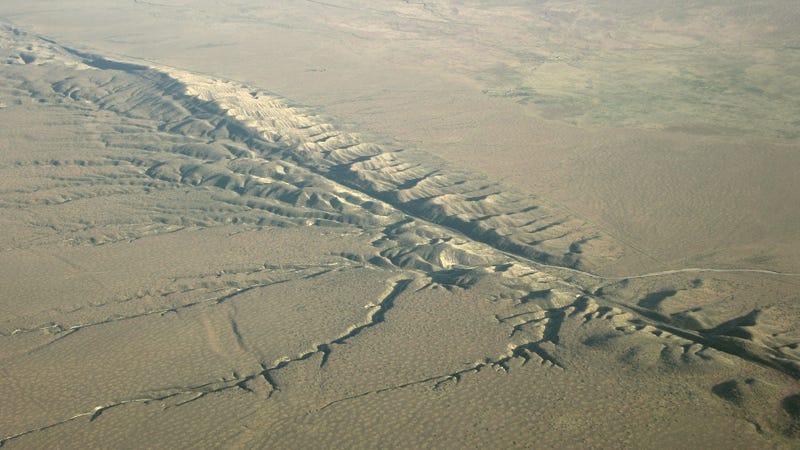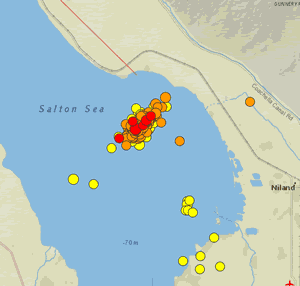
The USGS estimates a 1 in 100 chance of the San Andreas Fault rupturing between now and October 4.
(Image:SanAndreasFault.org)
A series of quakes under the Salton Sea may be a signal that the San Andreas Fault is on the verge of buckling. For the next few days, the risk of a major earthquake along the fault is as high as 1 in 100. Which, holy crap.
The United States Geological Survey has been tracking a series of earthquakes near Bombay Beach, California. This “earthquake swarm” is happening under the Salton Sea, and over 140 events have been recorded since Monday September 26. The quakes range from 1.4 to 4.3 in magnitude, and are occurring at depths between 2.5 to 5.5 miles (4 to 9 km).
For seismologists, these quakes could represent some seriously bad news. The swarm is located near a set of cross-faults that are connected to the southernmost end of the San Andreas Fault. Troublingly, some of these cross-faults could be adding stress to the San Andreas Fault when they shift and grind deep underground. Given this region’s history of major earthquakes, it’s got some people a bit nervous.
Calculations show that from now until October 4, the chance of a magnitude 7 or greater earthquake happening along the Southern San Andreas Fault is as high as 1 in 100, and as low as 1 in 3,000. On the plus side, the likelihood of it happening decreases with each passing day. These estimates are based on models developed to assess the probabilities of earthquakes and aftershocks in California.
“Swarm-like activity in this region has occurred in the past, so this week’s activity, in and of itself, is not necessarily cause for alarm,” cautions the USGS.
That being said, this is only the third swarm that has been recorded in this area since sensors were installed in 1932, and it’s much worse than the ones recorded in 2001 and 2009. This particular stretch of the San Andreas Fault hasn’t ruptured since 1680, and given that big quakes in this area happen about once every 150 to 200 years, this fault line is considerably overdue....MORE
